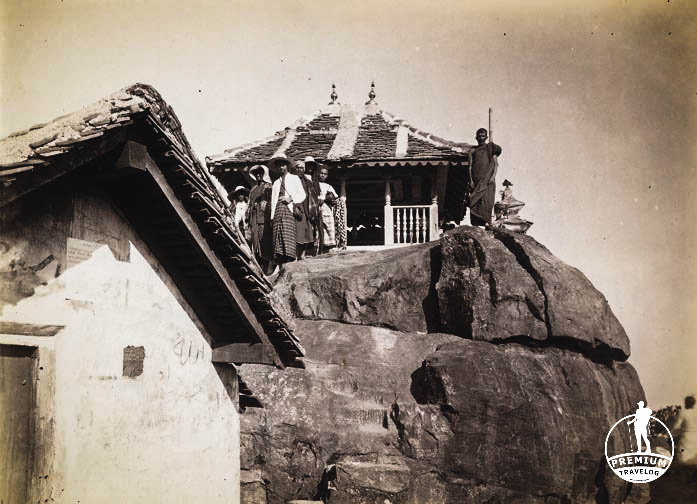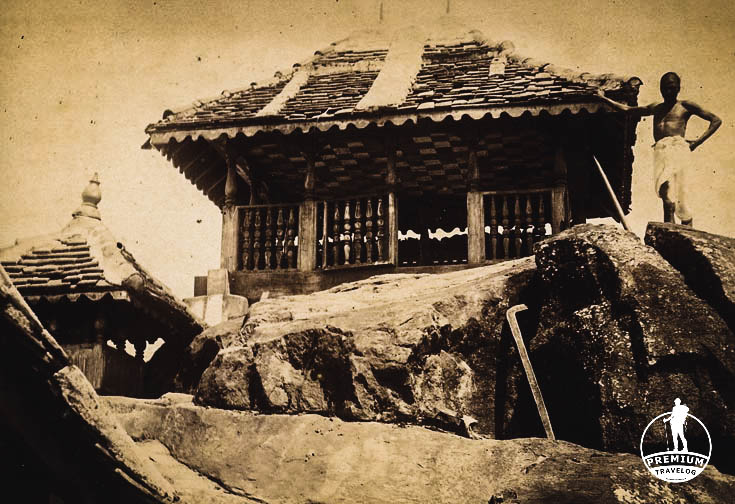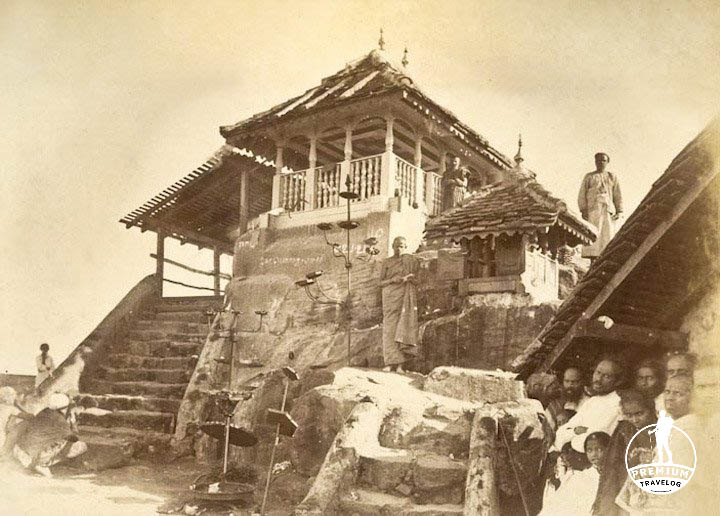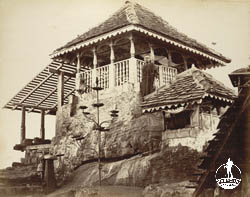Pilgrimage to Sri Pada
Pilgrimage to Sri Pada Samanalakanda, rising to 2243m or 7362’ is in the Ratnapura District of the Sabaragamuva Province. Perhaps, there’s no other mountain within the world, as famous as Sripada, then extensively mentioned , down the ages, in various literatures, as Adam’s Peak. Traditional belief among Sinhala Buddhists is that the peak. Samanalakanda, rising to 2243m or 7362’ is in the Ratnapura District of the Sabaragamuva Province. Perhaps, there’s no other mountain within the world

The History of Sri Pada ( Adam’s peak) is a Legendary
Buddhist enthusiasts who climb the Pinnacle view God Maha Sumana Saman as their big-hearted defender. Buddhism was acquainted with Sri Lanka during the rule of Lord Devanam Piya Tissa (307-266 B.C). He was the grandson of Lord Pandukabhaya (437-366 B.C), the pre-Buddhist originator of Anuradhapura, capital of Lanka, which went on for a long time up to the center of the ninth century Promotion. its accepted that the principal individual to find the Consecrated Impression was The best Valagambahu (104-76 BC) while he was in a state of banishment in the mountain wild, better referred to our kin as “Sri Pada Adaviya” .
The primary verifiable notice about Sri Pada comes during the rule of Vijayabahu. Teacher Senarath Paranavitana states: “It is in the rule of Vijayabahu” (1065-1119 Advertisement) we have the most punctual verifiable proof in annals and engravings by the religion of the Impression on Adam’s Pinnacle. It is recorded of this ruler that he, having seen the challenges experienced by the pioneers on their approach to adore the Buddha’s impression on Samanthakuta committed the town named ‘Gilimale’ to accommodate their necessities. Stone engravings of Vijayabahu have been found at Gilimale and Ambagamuwa affirming the announcement of the account.
The mountain has been move for at any rate 1000 years. Ruler Vijayabahu (1065-1119 Promotion) fabricated sanctuaries along its course, work proceeded by Parakaramabahu the second (1250-1284 Advertisement) who cleared wilderness and constructed a street and extensions to the mountain. Ruler Nissankamalla (1198 Promotion 1206 Advertisement). is expressed to have visited the Samanthakuta with his four-crease armed force and loved the Impression with incredible commitment. He had re-allowed the Town Ambagamuwa and it has been recorded in an engraving found in a cavern known as Bhagavalena. He had developed a solid section to secure the Impression.
Lord Vimaladharmasuriya developed a silver umbrella over the Impression. King Sitawake Rajasinhe (1581-1593), the fierce warrior lord, who walked in to fight against Portuguese at eleven years old and all through his rule perpetrated overwhelming thrashings on Portuguese at (Mulleriyawa mucky land had transformed into a red flood with the blood of the butchered Portuguese) and held the Portuguese Stronghold in Colombo under attack (blockaded Portuguese were decreased to make due on butchering hounds and pursuing felines and rodents for meat), had likewise visited the Impression. Śrī Vijaya Rajasinghe (1738-1745 Promotion) had additionally visited the mountain. Lord Kirthi Śrī Rajasinhe (1746-1778) during whose reign,Buddhist renaissance occurred had visited the Impression and reestablished to the sanctuary properties solidified by Ruler Sitawake Rajasinhe, who was told, by the Buddhist priests, that patricide was a practically unceasing sin and couldn’t be recovered during his lifetime. Kirthi Śrī Rajasinhe likewise gave the town, Kuttapitiya and the copper plate contract on the side of this gift is still in presence.
A Pali poem “Samantha Kuta Vannama” by a monk named Vedeha in the 13th century confirms the increasing interest shown by the Sinhala-Buddhists to the cult of this Footprint. In our recorded history, a good number of ancient kings have visited the mountain from time to time. Parakramabahu the 2nd (1250-1284 AD) visited the Footprint and paid homage. His minister, Devaprathiraja re-constructed roads leading to the mountain and installed iron chains on iron posts to make the ascent easy and conducted great festivities in celebrating to worship of the Footprint. Parakramabahu’s son, Vijayabahu, and other kings like Vikramabahu, Vimaladharmasuriya (1592-1603), his son King Narendrasinhe (1705-1737) were among Sinhala Kings who had visited the Footprint to pay homage.

Sri Vijaya Rajasinghe (1738-1745 Promotion) had likewise visited the mountain. Ruler Kirthi Sri Rajasinhe (1746-1778) during whose rule, Buddhist renaissance occurred had visited the Impression and reestablished to the sanctuary properties solidified by Lord Sitawake Rajasinhe, who was told, by the Buddhist priests, that patricide was a practically endless sin and couldn’t be recovered during his lifetime. Kirthi Sri Rajasinhe additionally gave the town, Kuttapitiya and the copper plate contract on the side of this gift is still in presence.
Among the curios formulated to climb then practically blocked off pinnacle were huge iron chains joined to stanchions of a similar metal verified to the exposed stone face. The chains were verified to the stanchions with bolts of iron and bronze. Remarking on the old ancient rarities on Sri Pada, the British chap Robert Percival, who presented with the English army in Colombo in the mid nineteenth century, takes note of: “The iron chains on the stone essence of Adam’s Pinnacle resemble being planted there at an early date, who set them there or for what reason they were set up there is hard for anybody to know”. The convictions and superstitions of the locals present challenges. Whatever it is, all proof demonstrates that the Pinnacle was in the spotlight well before the written history of the Island. Stays of these relics are as yet apparent. Early pioneers to the pinnacle utilized these chains to lift themselves up to the summit.
More Information
- Sri Pada or Adam’s Peak, Sri Lanka ( http://sripada.org/ )
- Images from images of Ceylon







Recent Comments
Anusha
4 years ago